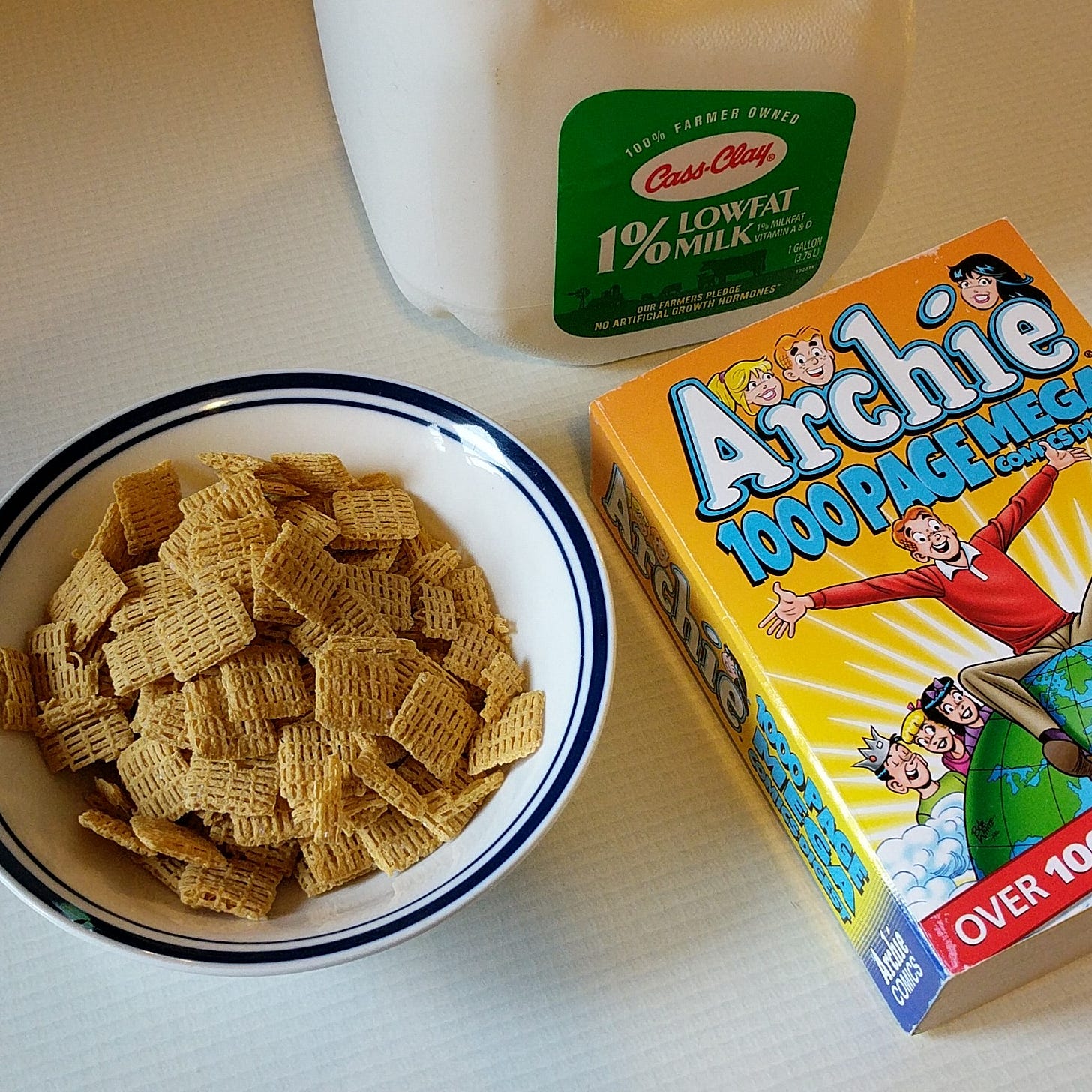The rise and expansion of non-nutritive information.
It is difficult to select for less.
First, do not worry.
This is not going to be a lengthy post about all the do-don’t-can-can’t diets out there, but instead, is referencing the great Clark Griswold of National Lampoons fame in order to talk about bloated content.
It starts with a bowl of cereal, and what our good pal Clark has …


